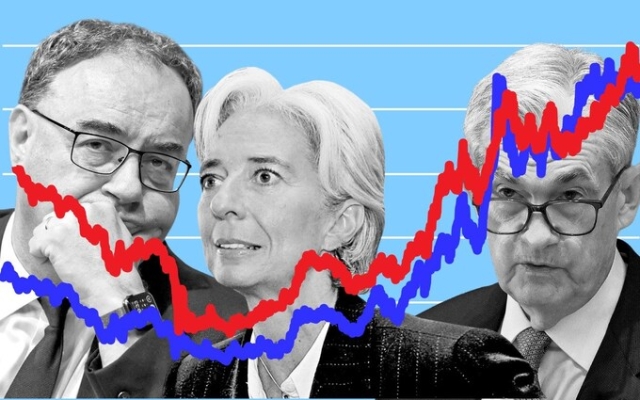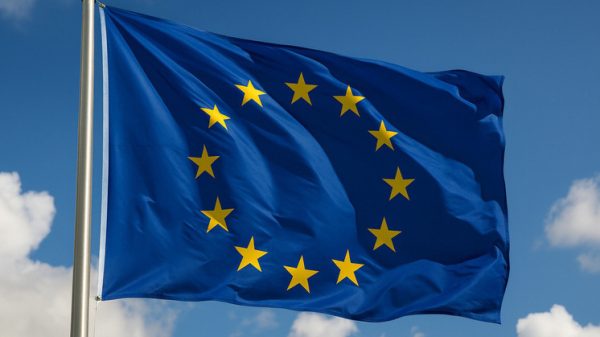
The UK economy appears to have dodged a bullet.
Despite last winter's giant energy price shock and the painful effects of sharply higher interest rates have meant that the economy is simply stabilizing rather than plunging into a severe recession.
Employment remains stable. Wage growth is outpacing price growth. Inflation is falling sharply.
The same can be said across the West: the US economy appears invincible in the face of rising borrowing costs.
Goldman Sachs, for example, estimates the likelihood of a recession in the US at just 15% — effectively a normal level, even as interest rates are rising rapidly to highs not seen since the financial crisis.
Even the eurozone could outperform the major economic decline despite Germany's plight.
However, not everyone is so confident that the remarkable resilience of these economies can and will continue.
Paul Mortimer-Lee, a veteran economist who formerly forecasts for the Bank of England and investment bank BNP Paribas, believes the economy is headed for a painful collapse.
His reasoning? The scale of the jump in interest rates is not yet fully understood.
“I would be very surprised if we didn't [get into a recession]. And I would be very surprised if we weren't facing a financial crisis,” says Mortimer-Lee, now a research fellow at the National Institute of Economic and Social Research (NIESR).
Mortimer-Lee is among a small group of economists who believe central banks have overdone their economic medicine and now risk killing the patient.
His argument is that the financial system has become completely geared towards low interest rates after nearly 15 years of cheap money in the post-2008 era. Many of the business models, investment ideas and hedging strategies that underpin the economy will now break down as interest rates remain high for a long time.
There have already been tremors: pension funds have been forced to quickly sell bonds in the wake of the 2022 mini-budget following the failure of commitment-led investment (LDI) strategies.
“Each person's portfolio is designed for a completely different interest rate structure. You tighten policy very quickly in this way and bad things happen,” says Mortimer-Lee, a Briton living in New York.
The original sin, he says, is that central banks have gone too far. far from quantitative indicators. easing (QE) during the pandemic.
The Bank of England has sharply increased its purchases of government bonds, increasing its balance sheet from £435 billion to £875 billion by the end of 2021. The European Central Bank and the US Federal Reserve have also introduced emergency stimulus measures.
“These guys were going crazy because of Covid,” Mortimer-Lee says. “Covid was a temporary thing, but they did things with their balance sheets that were permanent. They did much more for Covid than they did during the much more severe and prolonged global financial crisis.
“Rates are zero, buy every bond the government issues — that's why government deficits in the UK and US are outrageously high, because money was free. It's like giving a child a credit card and saying, «Spend as much as you want.» That's exactly what governments did.”
Now the debt comes due.
The Bank of England's argument is that much of what we now know can only be seen with hindsight.
Ben Broadbent, the Bank's deputy governor, argues that officials feared that the end of the Covid furlough scheme will lead to an increase in unemployment.
The Monetary Policy Committee waited until it was clear that sharp retrenchment would not occur before tightening policy.
By then, inflation was already rising rapidly and the Bank was forced to raise interest rates extremely quickly. to curb price increases. : Rate hike from 0.1% in December 2021 to 5.25% today.
With similar actions from the Fed and the European Central Bank, the result can only be dire, says Mortimer-Lee.
< p>American businesses will face a “nightmare” next year as cheap debt expires and must be refinanced at higher prices.“The housing market is a disaster waiting to happen,” he says , arguing that households were borrowing as if low rates were here to stay.
If he's right, why are we seeing only limited effects from the growth spiral? What is the current cost of borrowing?
The rule of thumb for monetary policy is that rate hikes take 18 months to two years to fully impact the economy. The Bank's first rate hike was in December 2021, so not even two years have passed yet.
In addition, the Bank continued to raise rates until August this year, so the effects will gradually affect the economy in the coming years.< /p>
Given these delays, it is difficult for policymakers to take action. know exactly how high to raise your stakes.
The Bank of England's own forecasts show it has done enough to avoid a recession while returning inflation to its 2% target in the coming years.
< p>It is important to note that policymakers led by Governor Andrew Bailey state that rates must remain at this high level for some time to ensure that inflation is truly driven out of the economy.
“It’s too early to talk about cutting rates,” the governor said last week. Inflation is falling, “but we must continue to work to make it happen.”
The same signal comes from the European Central Bank (ECB), which raised eurozone interest rates to a record high of 4%. Christine Lagarde, the ECB's president, said it would be «completely premature» to discuss rate cuts.
Across the Atlantic, the Fed's Jerome Powell insists rates can rise further rather than fall.
“We ask the question: Should we go hiking more?” — he said.
Mortimer-Lee believes this is a terrible mistake. He believes that central banks, and the Fed in particular, are “driving looking out the back window, not the front.”
The impact of historic interest rate hikes may be slow in coming, but they are accelerating.
For example, in the housing market, price declines remain relatively limited as owners stay put rather than move, especially in the US, where buyers have secured low 25-year mortgage rates. years or more before rates begin to rise.
However, many of them may soon be forced to sell, causing prices to fall.
“Once people start losing their jobs and are forced to sell their homes , there will be a major correction in the market,” says Mortimer-Lee.
Businesses are already starting to struggle and the labor market is collapsing.
More than 2,300 British businesses filed for bankruptcy last month, up from about 1,500 per month before the pandemic.
Mortimer-Lee also cites the tightening of the UK money supply as another warning sign. of a looming recession.
Although it is an unfashionable indicator, Mortimer-Lee says money supply figures «gave the clearest signals in 2020 and 2021 that inflation was on the way» and now point extremely sharply downward.
Recessions, when they come, can hit quickly, warns Mortimer-Lee. Factories that took years to build can be shut down overnight. Workforces that took time to build could be laid off almost immediately.
Right now, central bankers are “in denial,” Mortimer-Lee says. He believes central banks will be forced to dramatically change their policies next year when rubber hits the market.
It's one of the starkest warnings yet among bearish analysts who fear central banks have gone too far.
The other is Albert Edwards, the famously dour City analyst at Societe Generale.
In his latest report, Edwards warned that the Fed risks making a mistake of historic proportions. due to excessive tightening of policy, akin to the failure to increase the money supply in the 1930s that allowed the Great Depression to take hold.
“Central bankers wouldn't make that mistake again, would they? » says Edwards. “Despite assurances from the Fed, they are doing it again.”
For now, we'll just have to wait for a recession.
“We're on the brink of a recession now, inflation is high so central banks don't want to cut rates and the budget deficit is bloody awful,” says Mortimer -Lee
“If we get a recession, how can governments respond to that recession through fiscal policy? Answer: they can't. Central banks have put us in the proverbial creek without a paddle.”




















































Свежие комментарии